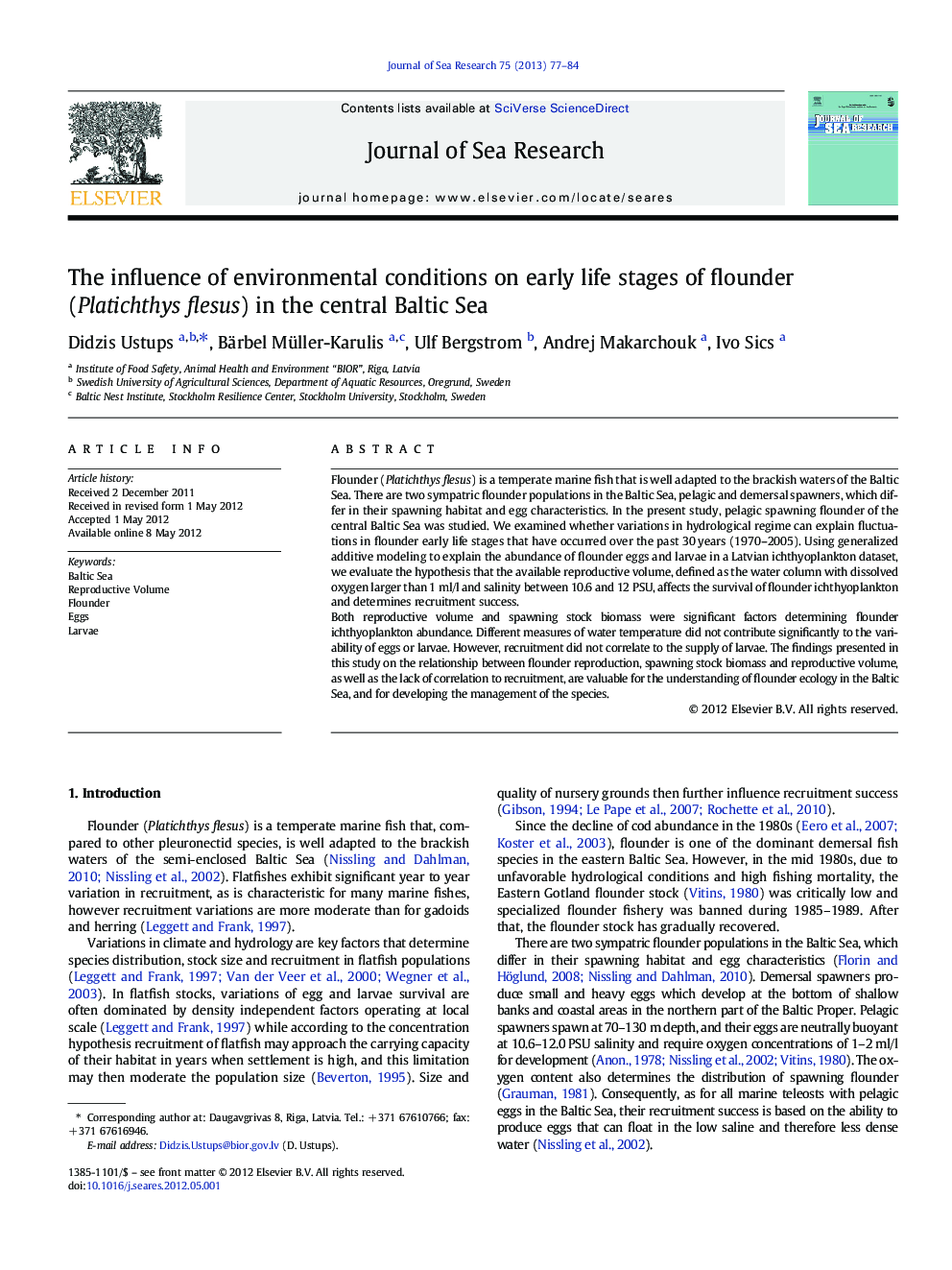| Article ID | Journal | Published Year | Pages | File Type |
|---|---|---|---|---|
| 6387529 | Journal of Sea Research | 2013 | 8 Pages |
Flounder (Platichthys flesus) is a temperate marine fish that is well adapted to the brackish waters of the Baltic Sea. There are two sympatric flounder populations in the Baltic Sea, pelagic and demersal spawners, which differ in their spawning habitat and egg characteristics. In the present study, pelagic spawning flounder of the central Baltic Sea was studied. We examined whether variations in hydrological regime can explain fluctuations in flounder early life stages that have occurred over the past 30Â years (1970-2005). Using generalized additive modeling to explain the abundance of flounder eggs and larvae in a Latvian ichthyoplankton dataset, we evaluate the hypothesis that the available reproductive volume, defined as the water column with dissolved oxygen larger than 1Â ml/l and salinity between 10.6 and 12Â PSU, affects the survival of flounder ichthyoplankton and determines recruitment success.Both reproductive volume and spawning stock biomass were significant factors determining flounder ichthyoplankton abundance. Different measures of water temperature did not contribute significantly to the variability of eggs or larvae. However, recruitment did not correlate to the supply of larvae. The findings presented in this study on the relationship between flounder reproduction, spawning stock biomass and reproductive volume, as well as the lack of correlation to recruitment, are valuable for the understanding of flounder ecology in the Baltic Sea, and for developing the management of the species.
⺠Flounder reproductive volume varies with major saltwater inflows in to the Baltic. ⺠Statistical models (GAM) linked flounder early life stages to hydrological conditions. ⺠Abundance of flounder early life stages depends on reproductive volume and SSB. ⺠The lack of correlation between larval abundance and recruitment is discussed.
